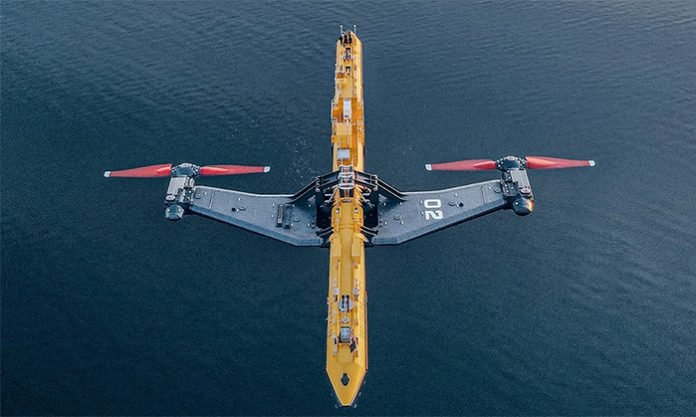
The realm of green energy is full of exciting possibilities. For island nations like the UK, the promise of tidal power has always been attractive. This is owing to the country’s unique geography and potential for this type of energy generation. It should be no surprise then that the O2, the most powerful tidal turbine in the world, is being developed there. It operates in the remote Orkney Islands off the north coast of Scotland.
What is the O2?
Given the grand scale and high-tech nature of the device, you might think that the O2 is some kind of next-generation military equipment. On the contrary, it is in fact a large, 680-ton tidal turbine created by UK-based Orbital Marine Power. At 243 feet long, it’s about the same size as a Boeing 747 in length. Its rotor-holding arms reach 59 feet below the surface of the water, where the 66-foot rotors then sweep an area of 6,458 square feet.
The O2 will operate in the company’s homebase of the Orkney Islands. The reason for choosing Orkney as the first site to host an O2 unit isn’t an arbitrary choice. It’s because Orkney is home to some of the strongest tidal currents in the world, sometimes in excess of 3m/s. Harnessing this tidal power, the O2 will be used to help power the homes that make up the Orkney community, delivering local, clean and green energy.
The O2: Technology
Tidal power has been generated before, so what’s so special about the technology behind Orbital’s new system? The O2 unit works using a unique floating platform developed entirely by Orbital. It’s moored to the seabed using strong anchors that hold it in place even during the strongest tidal streams. These flows of water are captured using underwater rotors attached to adjustable legs.
A particularly ingenious part of the rotor design is that they can be reversed in between different tide cycles. This means that the O2 is capable of capturing power-generating tidal flows no matter in which direction they are going. Power generated is sent via cables to the attached electricity grid.
The legs begin at a horizontal level matching the floating O2 unit, but these then lower themselves into the water when it’s time to activate the power-generating rotors. The beauty of this system is that the O2 can be safely maintained and repaired while it’s still moored in place as the legs can be brought back up to water level to be worked on by technicians and engineers. In addition, despite its large heft, it can still be towed by inexpensive typical tugboats, which makes putting in place and bringing it back to shore a relatively cost-effective proposition.
The Future of Green Energy?
If successful, why could the O2 and units like it become a more viable alternative to wind and solar power? For one thing, water is much more energy-dense than air, meaning that even with smaller rotors, a lot more energy can be produced by a tidal stream moving 4m/s than with wind. What’s more, tides can be predicted and depended upon, unlike wind and sunshine. As long as we have the moon in place, we know where the tides will be and how strong.
Despite these exciting facts, even Orbital’s CEO Andrew Scott admits it isn’t a “silver bullet” to solve climate change or energy crises. The company has successfully tested its prototype, the SR2000 in the Orkney waters. With the concept proved, the way is clear for implementation of the O2 to see how this can work on a bigger scale. Learn more about Orbital and the O2 tidal turbine on their website.

Startup
A startup or start-up is a company or project undertaken by an entrepreneur to seek, develop, and validate a scalable business model. While entrepreneurship refers to all new businesses, including self-employment and businesses that never intend to become registered, startups refer to new businesses that intend to grow large beyond the solo founder. At the beginning, startups face high uncertainty and have high rates of failure, but a minority of them do go on to be successful and influential. Some startups become unicorns; that is privately held startup companies valued at over US$1 billion.
Actions
Startups typically begin by a founder (solo-founder) or co-founders who have a way to solve a problem. The founder of a startup will begin market validation by problem interview, solution interview, and building a minimum viable product (MVP), i.e. a prototype, to develop and validate their business models. The startup process can take a long period of time (by some estimates, three years or longer), and hence sustaining effort is required. Over the long term, sustaining effort is especially challenging because of the high failure rates and uncertain outcomes. Having a business plan in place outlines what to do and how to plan and achieve an idea in the future. Typically, these plans outline the first 3 to 5 years of your business strategy.
Design principles
Models behind startups presenting as ventures are usually associated with design science. Design science uses design principles considered to be a coherent set of normative ideas and propositions to design and construct the company's backbone. For example, one of the initial design principles is "affordable loss".
- Log in to post comments